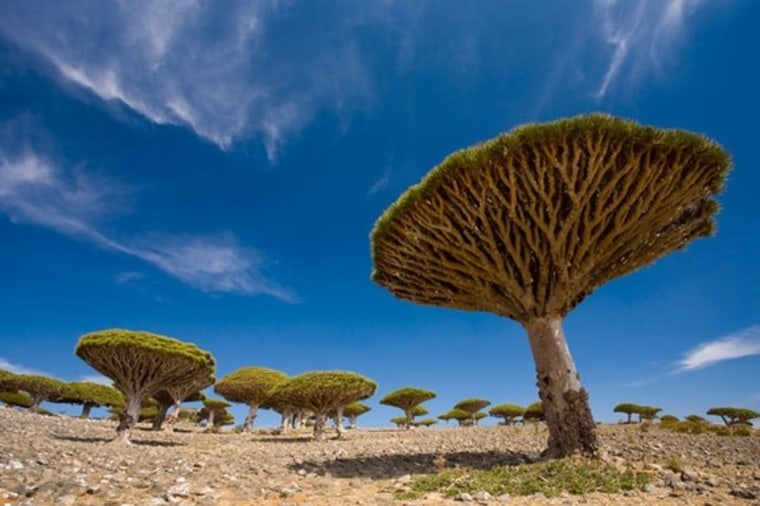From a helicopter window, Antarctica appears colorless: pure white in every direction, a glaze covering the planet.
Swoop into the McMurdo Dry Valleys and the bare, naked ground comes into focus, as does a most bizarre sight: a rust-red waterfall oozing down the face of a mammoth glacier. Welcome to Blood Falls—one of the world’s strangest places.
In an increasingly familiar world—where guidebooks and Google Earth would seem to have exposed every last nook and cranny—it’s refreshing to discover places that still surprise. Sure, they may not be as easy to access as, say, the Rockies (which are divine, if not revelatory), but it’s precisely this isolation that has allowed them to evolve their odd characteristics. Venturing into unknown lands may be surreal, but it’s also impressive—and rewarding.
Blood Falls is just one example of how Antarctica “will change the way you think about life,” says David Dallmeyer, professor of geology at the University of Georgia and guide for Abercrombie & Kent.
“I’ve seen azure blues you can’t imagine. I’ve seen three-mile-wide icebergs break in half and roll inwards.” With 50 years’ worth of excursions under his belt, Dallmeyer is not easily surprised, but, he admits, “In Antarctica, there is nothing else like the Dry Valleys. They’re an enigma.”
But Mother Nature isn’t the sole creator of these oddities. In Turkey, the fairy-tale-invoking Göreme National Park results from both natural and man-made handiwork. Its giant sandstone spires, known as hoodoos—which erosion first sculpted into arresting mushroom shapes—were later carved into houses, churches, and underground communities by Christians fleeing Roman persecution in the first millennium A.D.
The resultant bustling canyon-land gives the impression of being a human-populated coral reef (a perfect location for "Star Wars Episode IV: A New Hope", which was filmed there).
“The Love Valley section of the park definitely raises some eyebrows with its giant phalluses,” says Tony Carne, destination manager for Intrepid Travel, an outfitter devoted to sustainable tourism in delicate regions such as Göreme. “Plus,” he quips, “it’s fun to work the word ‘troglodyte’ into casual conversation.”
Weird and wonderful destinations like these can elicit double takes and openmouthed awe in even seasoned globe-trotters. Many of these strange places are even more striking because most people don’t know they exist. Imagine stumbling upon the Grand Canyon or Great Pyramids of Giza for the first time, and you can perhaps conjure the reactions these rare wonders evoke.
